Close UP
NGO The Volunteers Group to Send Wheelchairs to Overseas Children ~Non-governmental organization The Volunteers Group to Send Wheelchairs to Overseas Children~

NGO: Volunteers Group to Send Wheelchairs to Overseas Children is working to deliver wheelchairs that Japanese children have outgrown, to children overseas. In the 20 years since the organization was established in 2004, they have donated 9,395 wheelchairs to 26 countries (as of June 2023). In 2020, they received the Japan Foundation's Global Citizenship Award, and their activities have garnered much support and empathy. We interviewed Mr. Hirokazu Morita, Chairperson, Mr. Akira Kuwayama, director, and Mr. Takao Akine, director, about their motivation for establishing the organization, and the actual situation of wheelchairs for children.
Utilizing children's wheelchairs that are discarded in good condition after 3-4 years of usage.
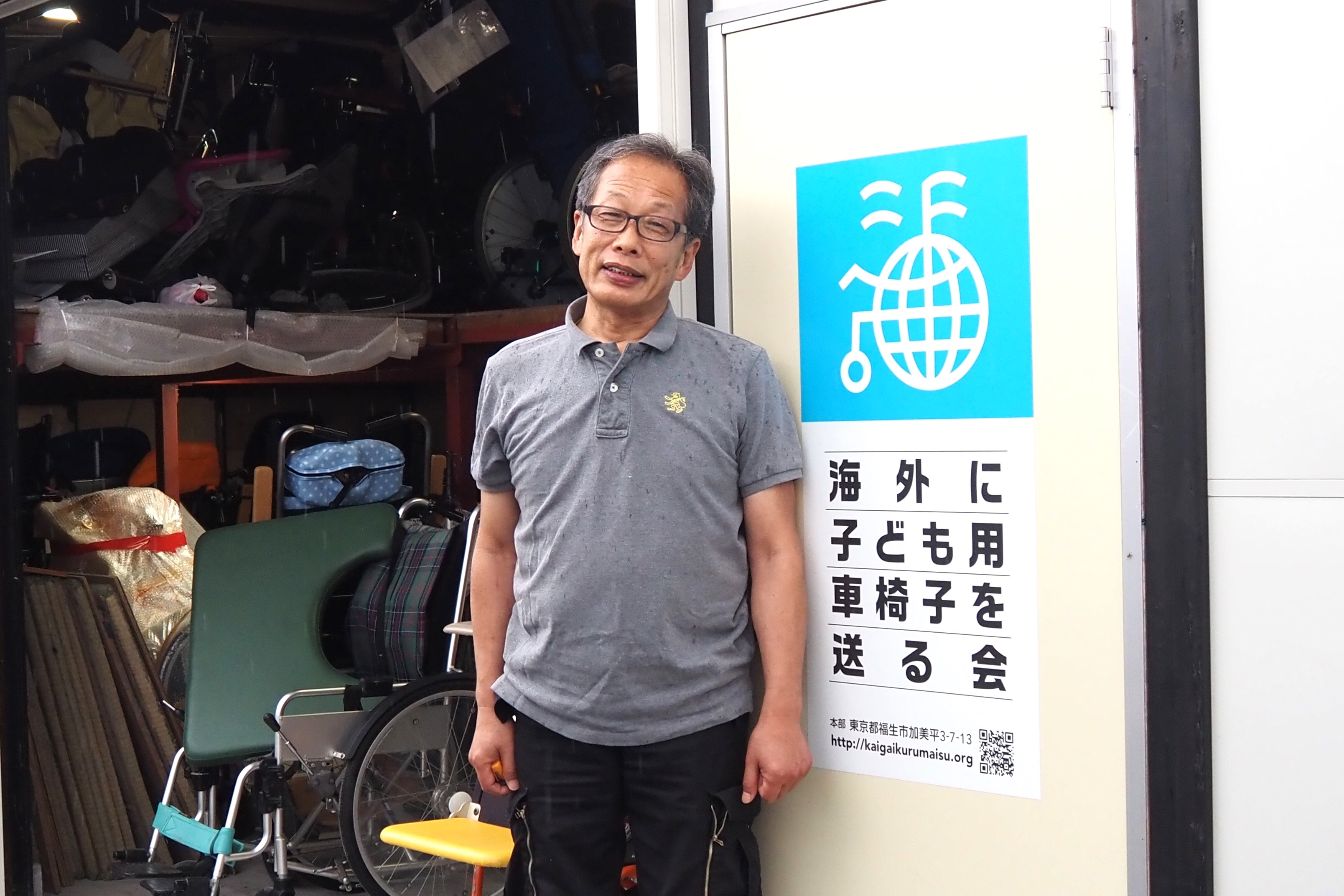
In Japan, each child with a physical disability receives a special wheelchair suitable to their physical condition under the advice of a specialist. Since children grow quickly and their physical conditions change, wheelchairs need to be replaced every three to four years. When replacing a wheelchair, subsidies (usually 90% subsidies) from prefectural and municipal governments are applied to the purchase of new wheelchairs but do not apply to the purchase of second-hand wheelchairs. So, most used wheelchairs are disposed of as oversized garbage.
"Even though they are used (wheelchairs), many of them are fully usable if repaired and maintained, as children's wheelchairs are replaced every three to four years. I have a son with cerebral palsy who uses a wheelchair, and although he has outgrown it, I was reluctant to throw away a wheelchair that was not broken and still usable. Many wheelchairs for children are very expensive, and everyone thinks it's a waste to throw them away in a usable condition. But it's hard to find people who think about doing something (to change that status quo). I was like that, too," says Mr. Morita, and a turning point in his life occurred.
"When I thought about my life in the future after suffering a serious illness, I decided I wanted to leave something behind for the next generation. Then I saw a wheelchair in good condition that had been left on the porch because my son was no longer using it, and I wondered if I could put it to good use."
Wheelchairs that have served their purpose in Japan travel around the world and become the treasure of a child in some other country.
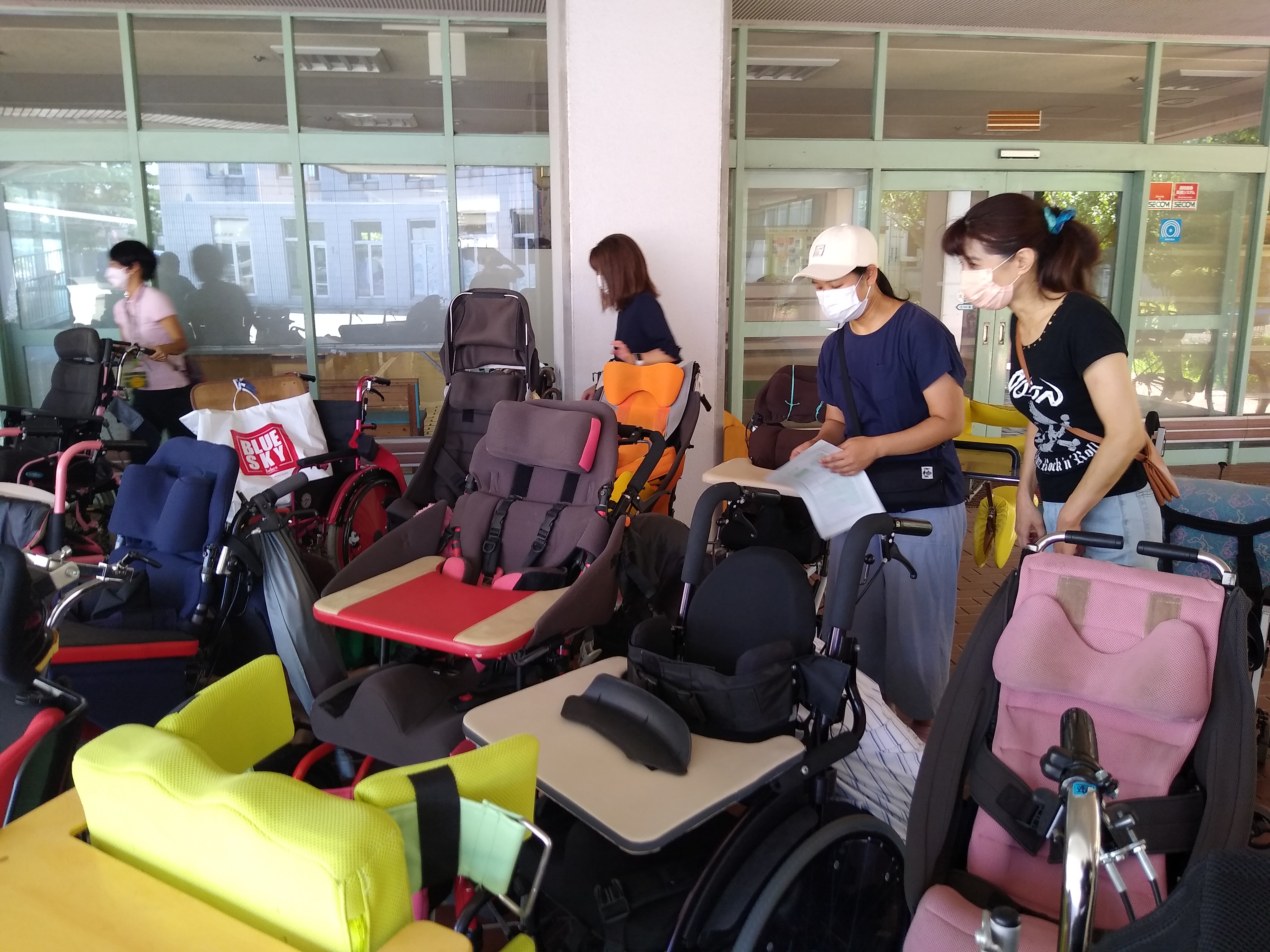
Since then, Mr. Morita began researching the situation of wheelchairs for children in other countries. In his research, he found that in many foreign countries, except for in developed ones, wheelchairs for children are not manufactured domestically. He came to realize that children often use adult wheelchairs or, even worse, have never been in a wheelchair, and are often left immobilized at home.
“I realized that there are many children who do not have access to wheelchairs, so we decided to clean and maintain some that were no longer in use in Japan, then send them free of charge to children who need them, overseas. Children grow up so fast that we wanted to deliver wheelchairs to as many children as possible as soon as we could. Gathering people, getting activities started, incorporating the organization..., I forgot to see a doctor, I was just crazy about it,” says Mr. Morita.
The Volunteers Group to Send Wheelchairs to Overseas Children has called on more than 50 locations in the Tokyo metropolitan area, including PTAs of special-needs schools, schools, and rehabilitation centers for children, asking them to donate wheelchairs that these locations were having trouble disposing of free of charge. More and more people are now bringing their no-longer-needed wheelchairs to us, saying, “I’m glad that my no-longer-needed wheelchair is making a wonderful international contribution”.
“The reason I have been able to continue this far is truly due to everyone's support and cooperation. I was the one who called for it, but I believe it was the collective effort of all of us (that kept it going).”
A wheelchair allows disabled children to go outside and soak up the sun.
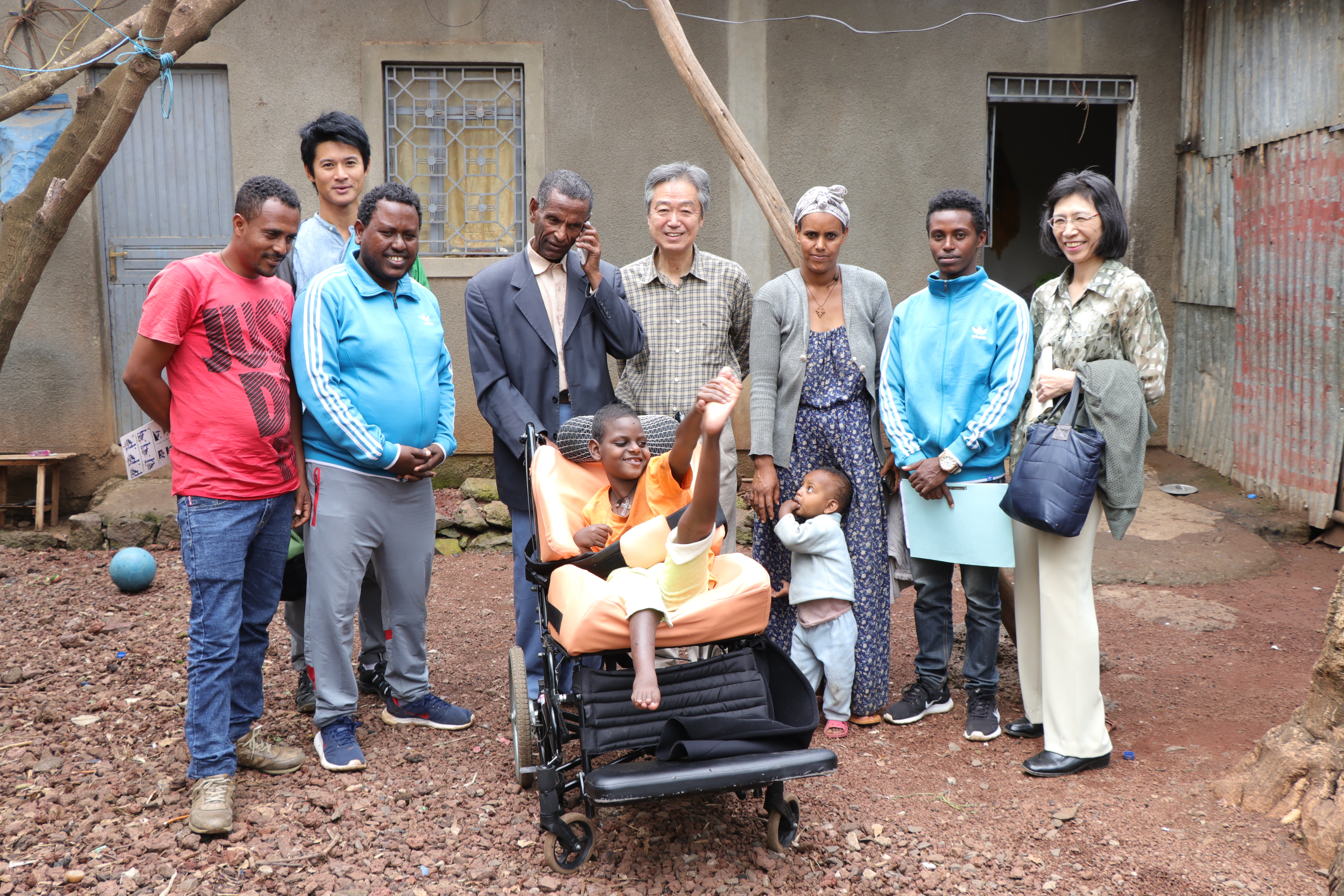
Once cleaned and maintained by the organization, the wheelchairs are delivered to children through the Red Cross, governments, public organizations, NPOs, and NGOs in the countries where they are donated (as of June 2023).
“When we send a wheelchair to a recipient country, we send data and photos of wheelchairs, including size, in advance so that we can find children locally who will fit them. That's why (this donation) is also called Cinderella Project,” says Mr. Akine.
The organization conducts home visits and interviews to determine if the wheelchairs delivered are reaching children in need, and how those wheelchairs are being utilized.
“Without a wheelchair, (these disabled children) would spend most of the day either in the arms of a family member or lying on a straw mat. The wheelchair allows (these children) to get out of the room, feel a breeze, and enjoy the sunshine. Even moving a couple of meters justifies the use of a wheelchair,” Mr. Akine continues.
Mr. Kuwayama says, “(The children) get excited when they use a wheelchair for the first time in their lives, and they are so happy that they shed tears of joy. Children's mothers promise us that (the wheelchair) is a family treasure and that they will take good care of it. Seeing them like that reminds us once again that we must continue our activities.”
The organization holds repair and maintenance workshops in various countries and provides technical training so that donated wheelchairs can be used for a long time. To ensure that people in the recipient countries can properly repair the wheelchairs, we also provide repair manuals with easy-to-understand explanations in the local languages, and promise to provide the necessary parts for repairs, for free.
Regular meetings to clean and maintain wheelchairs are also opportunities for international exchange.
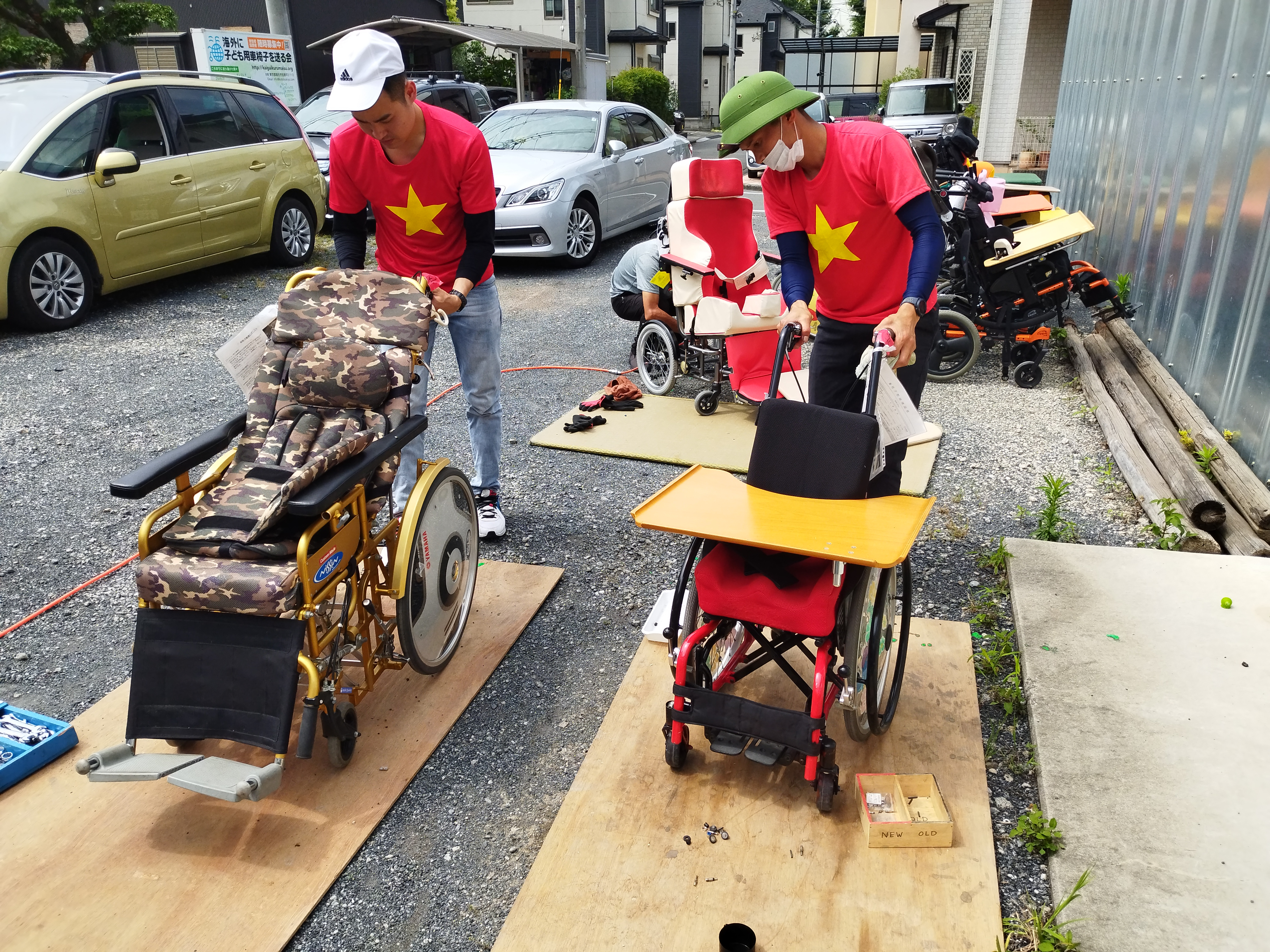
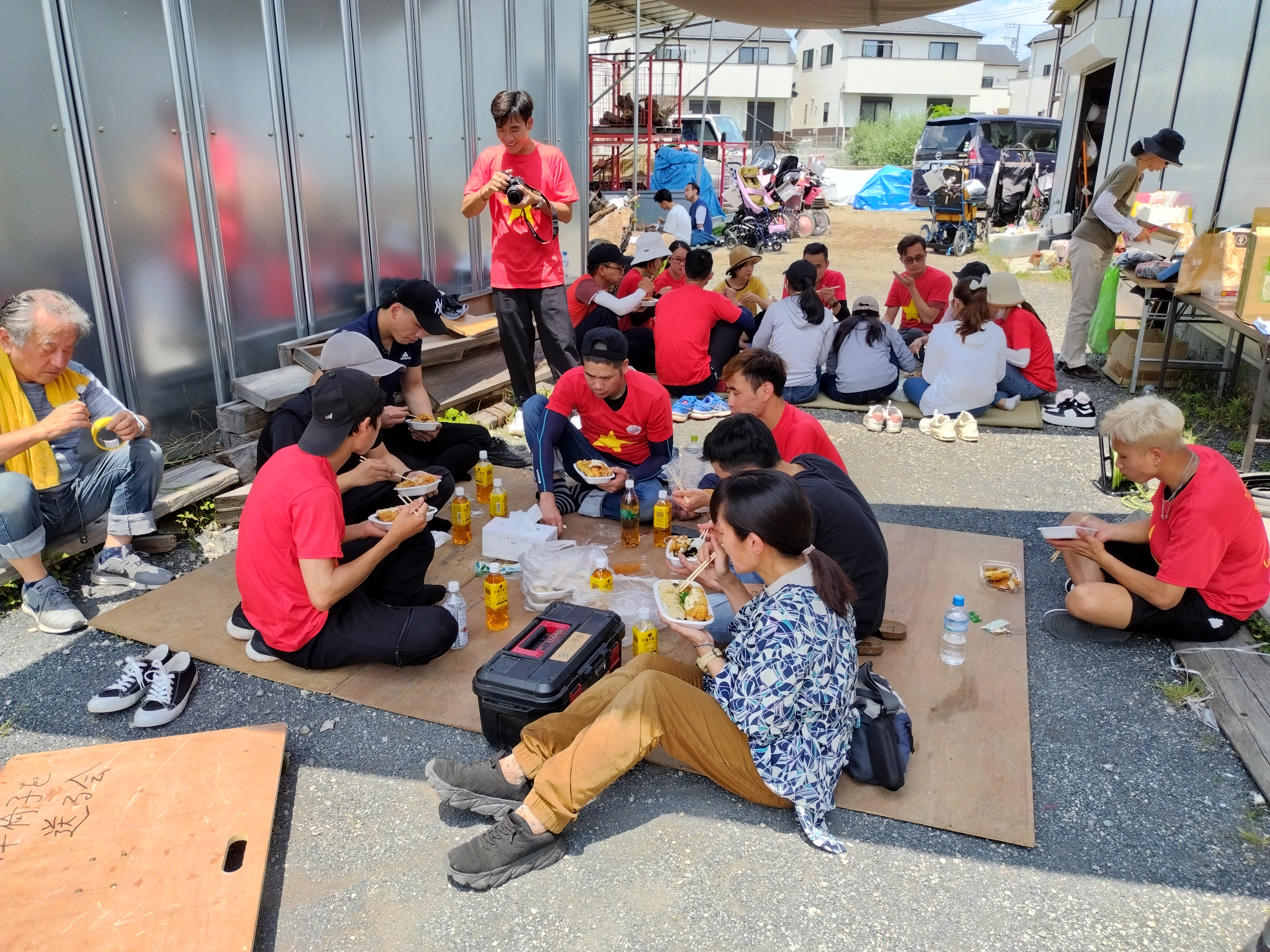
Approximately 200 wheelchairs are stored in the organization’s warehouse. At regular meetings held two to three times a month, volunteers clean, repair, and maintain the wheelchairs, paying special attention to wheelchair safety and durability. From cleaning to maintenance, the wheelchairs are controlled according to a check sheet, and after the entire process is complete, the wheelchairs are packed and shipped overseas.
“Depending on the number of volunteers who participate, we only can finish a dozen or so at one regular meeting. It takes time to clean (them) up,” says Mr. Kuwayama.
Various people attend the regular meetings, including high school students, university students, and groups coming from companies as part of their CSR activities. Many foreigners living in Japan also participate. At the most recent regular meeting, about 20 people from Vietnam attended, not only from Tokyo but also from Shizuoka and Gunma.
At first, many foreigners join our activities because they want to send (wheelchairs) to their own countries, but as they continue to participate in our activities, they say, ‘Even if the recipient of the wheelchairs is not in my country, I am happy if the wheelchair we send helps someone in need,’ and they continue to participate enthusiastically,” says Mr. Akine.
“We are very grateful that people come from far away to help us, incurring transportation expenses. I think that the participation of both Japanese and non-Japanese in our activities, it has also place for international exchange,” says Mr. Morita.
Hoping That Wheelchairs for Children Can be Made in Each Country
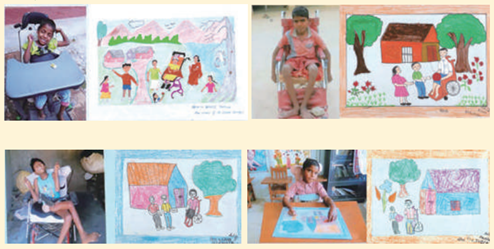
The organization is also working with other organizations to deliver wheelchairs to Ukraine through the “Japan Wheelchair Project for Ukraine,” starting this year, 2023. In Ukraine, there is a shortage of wheelchairs due to the increasing number of injured people, and wheelchairs are also needed when children with disabilities are evacuated. The project’s goal is to have 500 wheelchairs donated.
Children around the world to whom the organization has delivered wheelchairs have sent many pictures of themselves happily sitting in their wheelchairs, in addition to many thankful drawings. Families of the children have commented, “The burden of family caregiving has been reduced, social interaction with people in the community has increased,” and “Our lives have changed since we received a wheelchair. We can now go outside and meet people.”
We asked Mr. Morita about their future goals.
“Right now, we are doing something like wheelchair delivery, but we hope that the day will come when the necessity of wheelchairs for children will be understood, and each country will be able to make its own wheelchairs on its own. If we were able to help them get started, even a little, it would justify the existence of our organization. What we value as an organization is ‘harmony’. Harmony is the most important thing because we are working with the total power of everyone, with the help of each individual."
Wheelchairs that were destined to be abandoned in Japan have been transformed into wheelchairs of hope by the members of the Volunteers Group to Send Wheelchairs to Overseas Children, and now bring the freedom and joy of mobility to children around the world.
